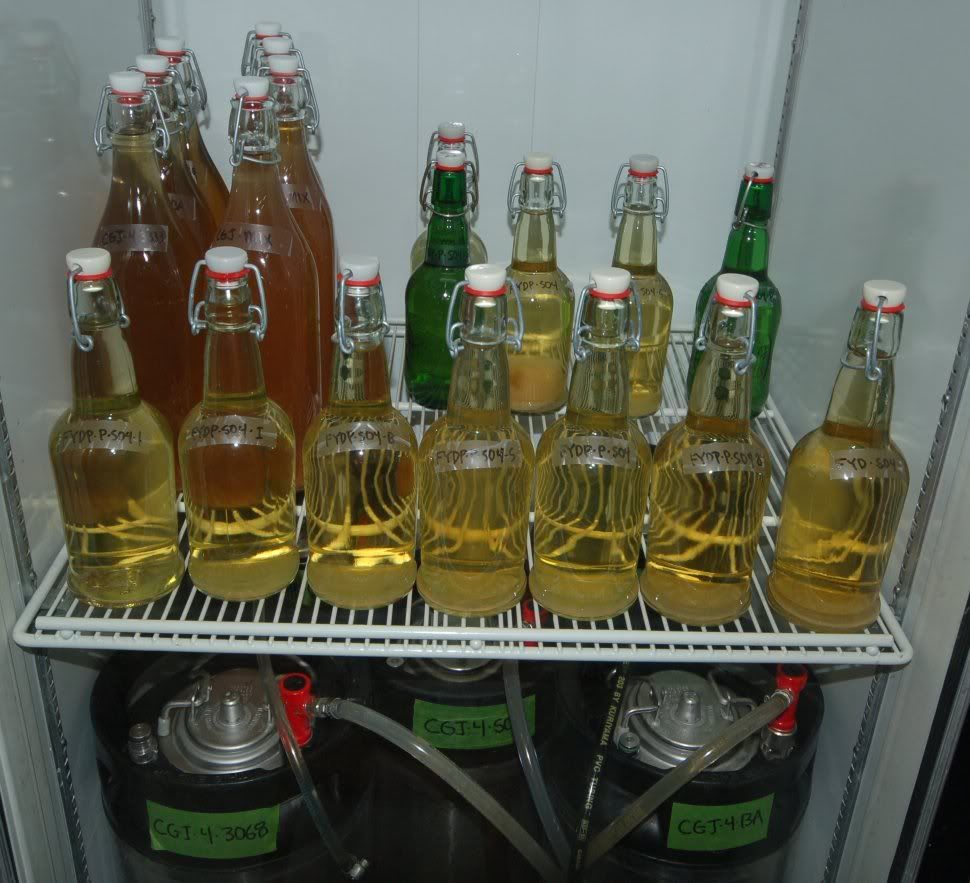CvilleKevin
Well-Known Member
Last Sunday we had a party here and I tapped 8 kegs. Six were from this year, plus the last sweet one from last year, and a real dry one from 3 years ago. The most popular was the WLP041 keg from this year, with the Wy3333 keg a close second. I didnt break out the Brupaks or Wy3056 kegs, cause those are still my favorites from the last round and I want to make them last a while. I plan on using WLP041 a lot more this year. Real easy to work with and folks liked it a lot.
We did another juice run for the brew club yesterday. 176 gallons of Stayman, Fuji, Gala and Winesap apples. sg was 1.058. I got 51 gallons for myself - 8 six gallon keg batches and 3 one gallon jugs to test some new yeasts from Mauribrew
For the keg batches, I pitched yeast in 4 of the carboys. Wy3056, Wy3068, Brupaks Ale and US05. I put the other 4 carboys in the fridge to clear for a few days. After they clear, I'm going to rack the clear juice off and pitch the same yeasts for comparison. The guy who runs the press clears his ciders like this and they always come out looking and tasting great. Last pressing I tried this with a test gallon. I didnt ferment it, just wanted to see the difference in raw juice between cleared and cloudy. The cleared juice was nice and smooth, with a silky mouth feel and good flavor, although I liked the cloudy stuff better. It started sweeter, with a heavier mouthfeel and more aroma. So my expectation is that the cleared batches are going to look better, but the cloudy ones will taste better. Should know for certain in a few weeks.
We did another juice run for the brew club yesterday. 176 gallons of Stayman, Fuji, Gala and Winesap apples. sg was 1.058. I got 51 gallons for myself - 8 six gallon keg batches and 3 one gallon jugs to test some new yeasts from Mauribrew
For the keg batches, I pitched yeast in 4 of the carboys. Wy3056, Wy3068, Brupaks Ale and US05. I put the other 4 carboys in the fridge to clear for a few days. After they clear, I'm going to rack the clear juice off and pitch the same yeasts for comparison. The guy who runs the press clears his ciders like this and they always come out looking and tasting great. Last pressing I tried this with a test gallon. I didnt ferment it, just wanted to see the difference in raw juice between cleared and cloudy. The cleared juice was nice and smooth, with a silky mouth feel and good flavor, although I liked the cloudy stuff better. It started sweeter, with a heavier mouthfeel and more aroma. So my expectation is that the cleared batches are going to look better, but the cloudy ones will taste better. Should know for certain in a few weeks.





